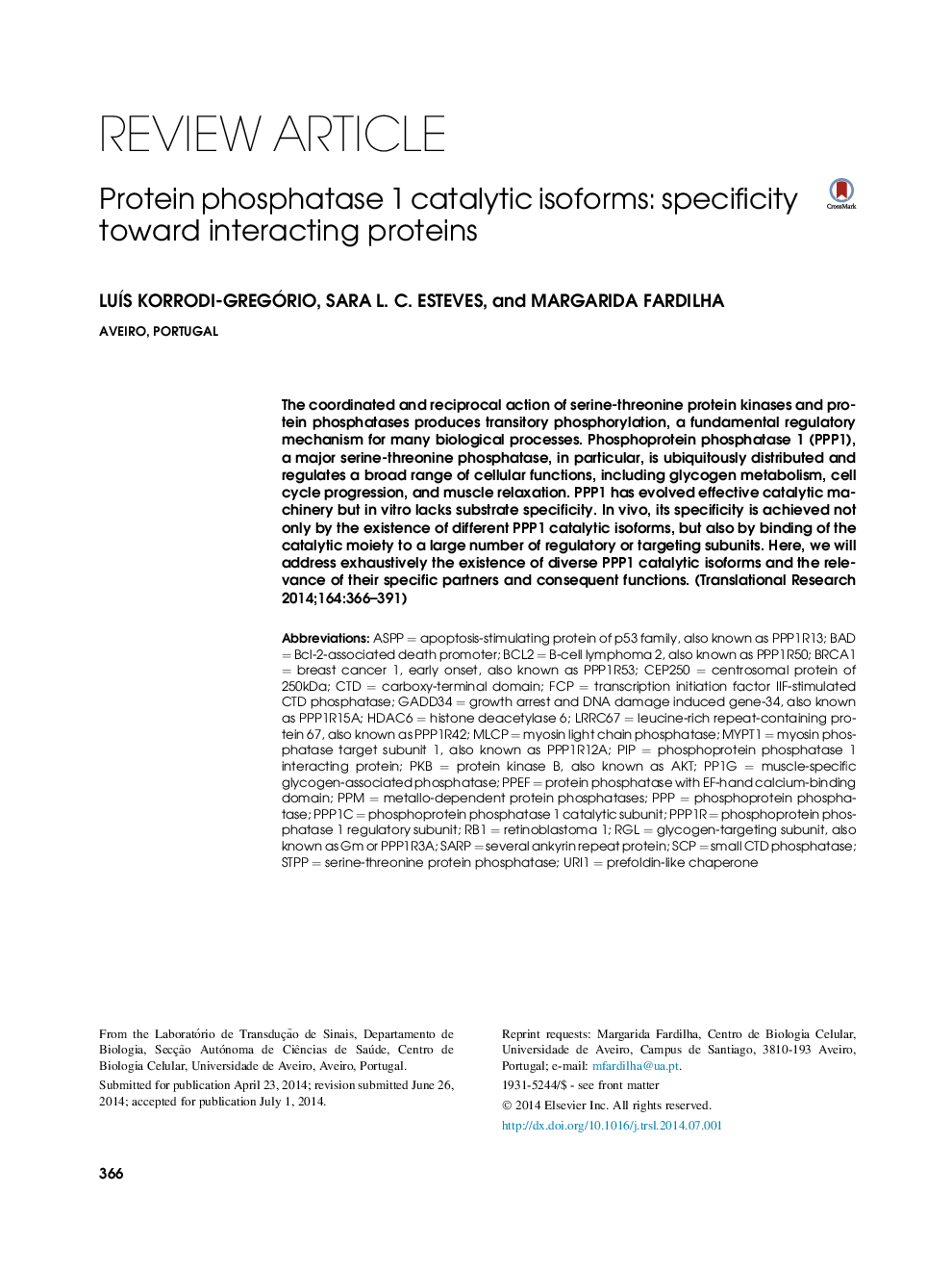| کد مقاله | کد نشریه | سال انتشار | مقاله انگلیسی | نسخه تمام متن |
|---|---|---|---|---|
| 3840386 | 1247910 | 2014 | 26 صفحه PDF | دانلود رایگان |
The coordinated and reciprocal action of serine-threonine protein kinases and protein phosphatases produces transitory phosphorylation, a fundamental regulatory mechanism for many biological processes. Phosphoprotein phosphatase 1 (PPP1), a major serine-threonine phosphatase, in particular, is ubiquitously distributed and regulates a broad range of cellular functions, including glycogen metabolism, cell cycle progression, and muscle relaxation. PPP1 has evolved effective catalytic machinery but in vitro lacks substrate specificity. In vivo, its specificity is achieved not only by the existence of different PPP1 catalytic isoforms, but also by binding of the catalytic moiety to a large number of regulatory or targeting subunits. Here, we will address exhaustively the existence of diverse PPP1 catalytic isoforms and the relevance of their specific partners and consequent functions.
Journal: Translational Research - Volume 164, Issue 5, November 2014, Pages 366–391
